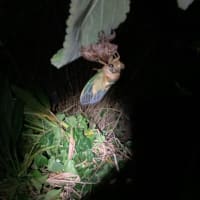As this Asia-Pacific Journal site (and its associated publications) has repeatedly demonstrated, Okinawa is a unique joint US-Japanese colony, that has endured 70 years of lying, deception, manipulation, discrimination, abuse and contempt from the Tokyo-based nation state. But it has also generated an opposition movement of world-historical significance on the part of the Okinawan people. That movement remains little understood internationally. The accompanying “position paper” by the “All Okinawa Council”1 is one recent initiative to try to remedy the situation.オール沖縄は2015年にピークだったのでしょうか?70年以上の嘘と差別、虐待、侮蔑、巧みな操作(マニュピレーション)を中央政府から受けている沖縄!
What follows here is a resume of recent developments in the “Okinawa problem,” through the prism of the contradiction between the nation state headed by Prime Minister Abe Shinzo and the prefecture headed by the Governor, Onaga Takeshi, followed by a consideration of the three major dimensions of the ongoing struggle between them: in the realms of information, the law, and the physical confrontation at the Henoko site. The multi-faceted struggle enters a phase of crucial importance.多様な葛藤【問題】が重要な様相をもっている。
Onaga vs. Abe
The confrontation pits the Prime Minister and Cabinet of Japan against the Governor and people of Okinawa. Since assuming office (for his second term) in December 2012, Abe has pursued a radical agenda, not only oriented towards enforcing his will over Okinawa but towards transforming the national polity: reinterpreting the constitution, committing Japan to global military support for the US, and joining the Trans-Pacific Partnership. Yet for none of these things did he have a mandate, and it is salutary to remember that the political dominance (holding 61.3 per cent of seats in the lower house) that allows Abe such concentration of power rests on an electoral victory in December 2012 in which his coalition secured just 33.4 per cent of the votes in the proportional system. That is, since only 52.4 per cent of people voted, Abe’s team gained the support of just 17.4 per cent of eligible voters.
Within Okinawa the margin of opposition to the base project stands in successive surveys at above 70 per cent, on occasion even as high as 80, while even nationwide he faces growing opposition, i.e., support for the Okinawan stance.2 “All Okinawa” is one of the most recent, representative, and determined of the civic organizations challenging the Abe agenda.
When Abe Shinzo at the end of 2012 formed government for the second time (following his 2006-2007 administration), virtually the entire prefecture, including the Governor and the Okinawan branch of his own party, the Liberal Democratic Party (LDP), opposed the Henoko project. He therefore concentrated on weakening, dividing and neutralizing that opposition. In 2013, he achieved his first success by persuading two prominent Okinawan LDP politicians to reverse themselves and drop their opposition to the Henoko base in April, and in December they were followed by the Okinawa chapter of the LDP itself and eventually by the Governor. The first defector, Shimajiri Aiko played a key role in leading and helping orchestrate the shift and was rewarded by being made parliamentary secretary to the cabinet (naikaku seimukan) and later (October 2015) given a seat in the third Abe cabinet. Her task was plain: to steer Okinawa’s polity and society from resistance to compliance, as she had helped do earlier with the LDP.
In July 2014, relying as warrant on the formal consent to reclamation/construction extracted from Governor Nakaima in December 2013, the Abe government began preparatory works on Oura Bay. By late 2015 it was moving towards the actual reclamation – readying to scour the coastal hills and beaches of much of Western Japan to provide two and a half million tons of soil and sand to dump into it.
Having taken office as Governor in December 2014 committed to “do everything in my power” to stop the Henoko construction project, Onaga Takeshi became the figurehead of Okinawan resistance. Once in office, Onaga referred the Nakaima decision process to a Third Party (Experts) Committee of environmentalists and lawyers. When they in due course concluded from their meticulous examination that the process had indeed been marked by fundamental flaws, Onaga on October 13 formally cancelled the reclamation license. The national government, its warrant for works removed, temporarily suspended them, but it was determined to evade and negate the governor’s ruling. The Minister for Lands and Infrastructure (Ishii Keiichi) issued an order cancelling the Governor’s order on grounds that otherwise it would be “impossible to continue the relocation” and because in that event “the US-Japan alliance would be adversely affected.” 3 He proceeded to issue first an “advice,” and then, three days later, an “instruction” to Governor Onaga to withdraw the cancellation order. Onaga summarily rejected both.
On October 27, the Abe cabinet met and decided to step up its pressure. It declared (through the Minister for Defense) that there had been no “flaw” in the license Nakaima had granted, suspended ongoing (if mostly in effect stalled) negotiations with the prefecture, launched judicial proceedings in the Naha branch of the Fukuoka High Court to compel the prefecture’s compliance, and ordered the resumption of works at the site. It also ordered an additional 100-plus riot police from Tokyo (units with names such as “Demon” and “Hurricane”), to reinforce the mostly local Okinawan forces who till then had been imposing the state’s will at the construction site. Overall, it amounted to a constitutional coup: stripping the Governor and prefectural government of powers vested in them by the constitution and the Local Government Act.
Okinawa for its part refused the direction to withdraw the cancellation order, prepared to launch a vigorous judicial defense, and launched a formal complaint under the little-used “Council for Resolving Disputes between Central Government and Local Governments”4
That same late-October session of cabinet also decided to abandon the plan to shift some units of Marine Corps MV 22 “Osprey” VTOL aircraft training to facilities in Saga prefecture (i.e. in Kyushu, mainland Japan), since local municipal and prefectural authorities there were resolutely opposed. In other words, local opposition was respected in the case of Saga, but over-ruled in the case of Okinawa. Throughout Okinawa, this was seen as decisive evidence of the national government’s discrimination against it.
Information
Both the Abe state and the Onaga prefecture strive to represent their case in terms of a “story” that would be persuasive in Okinawa itself, Japan, and in international fora. While Abe and his ministers insist that there is no alternative to the Henoko project, that it amounts to a “burden reduction” for Okinawa, and that the project has now entered the irreversible phase of “main works” (hontai koji), Governor Onaga presents the totally different story of an inequitable and increasing burden, building upon the initial illegal seizure of Okinawan land and in defiance of the clearly and often expressed wishes of the Okinawan people; of a struggle for justice and democracy and for the protection of Oura Bay’s extraordinary natural biodiversity, worthy, as the prefecture saw it, of World Heritage ranking. Increasingly, Okinawa carries that message to international fora, including the the Governor’s mission to the US in May and the UN (Human Rights Committee) in Geneva in September 2015. The All Okinawa mission of November 2015 is part of that process.
The visit to Okinawa by the Greenpeace vessel, Rainbow Warrior in early November 2015 was another expression of this gradual internationalizing of the dispute. Though Greenpeace had several times in the past (2000 and 2005) visited Okinawa, including Oura Bay, this time the vessel was allowed to dock only in in Naha and Nago harbours, its crew forbidden even to go ashore at Naha for four days, and refused permission to visit Oura Bay. It signified the Abe government’s determination to contain the Okinawa story and stop it from gaining wider international publicity.
Another measure of the Abe government’s intent to control the “Okinawa story” is the view, several times articulated, by Abe’s close friend, the novelist Hyakuta Naoki, that the two Okinawan newspapers (Ryukyu shimpo and Okinawa Times) should be closed down because they express “traitorous” views. Hyakuta is an Abe appointee (2013) to the board of governors of Japan’s public broadcasting corporation, NHK. Though such views amounted to “hate speech,” they attracted little attention in mainland Japan.5
The Abe government steadily strives to sway local Okinawan opinion, finding and encouraging supporters for the government’s design and countering elected officials who oppose it. In the cabinet reshuffle of October 2015, Shimajiri Aiko, the original “turncoat” of 2013 was promoted to cabinet as Minister for Okinawa, with responsibilities that included also the Northern Territories, science and technology, space, oceans, territorial problems, IT, and “cool Japan.” She was much appreciated in Abe circles, not only for her role in 2013 but for the views she expressed in 2014-5: calling for the Riot Police and Coastguard to be mobilized to curb the “illegal, obstructionist activities” of the anti-base movement (February 2014), denouncing Nago mayor Inamine for “abusing his power (April 2015), and referring contemptuously to the “irresponsible citizens’ movement” (October 2015). As Okinawa minister, she could be expected to use her considerable powers of patronage and influence to try to sway Okinawan society towards submission to the Abe design.
Since Nago City had from 2010 twice returned a mayor and local assembly majority that resisted all attempts at suasion, and refused to accept any monies linked to it, Abe, Shimajiri, and other members of government paid close attention to trying to divide and weaken the city’s anti-base movement. Late in October, the heads of three of the city’s 55 sub-districts (ku) – Henoko, Kushi and Toyohara (population respectively 2014, 621, and 427) – were invited to the Prime Minister’s office in Tokyo. They set out their wish-list, asking for repairs to the local community halls, purchase of lawnmowers, and provision of one (or perhaps several) “azumaya” (a kind of summer-house or gazebo).6 They were told they were to be allocated the sum of 13 million yen each in the 2016 budget, a subsidy that would bypass the representative institutions of the city and prefecture. It was to be (as Chief Cabinet Secretary Suga later put it), “compensation” for the noise and nuisance caused them by the protest movement.
It was a trifling enough sum (less than half a million dollars in all), but it was without precedent, it defied the principles of parliamentary sovereignty and local self-government, and was a most likely illegal attempt to evade democratic will and constitutional procedure. 7 Public funds were appropriated, with no accountability, to encourage a cooperative, base-tolerating spirit in a few corners of a stubbornly anti-base city.8
.https://www.globalresearch.ca/okinawa-a-unique-joint-us-japanese-colony/5494530
以下サイトに飛んでください!このブログは30000語LIMITがあります。



















